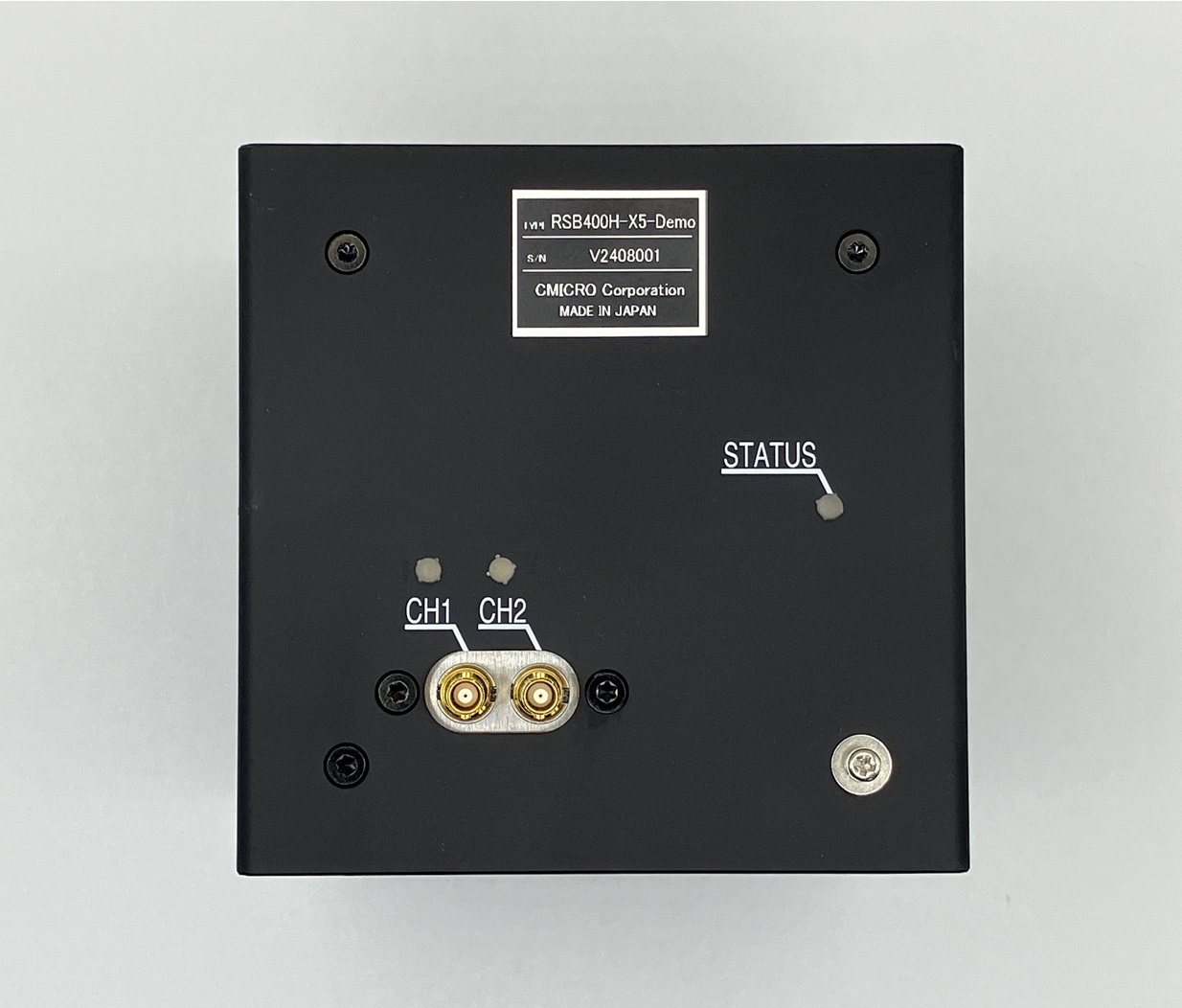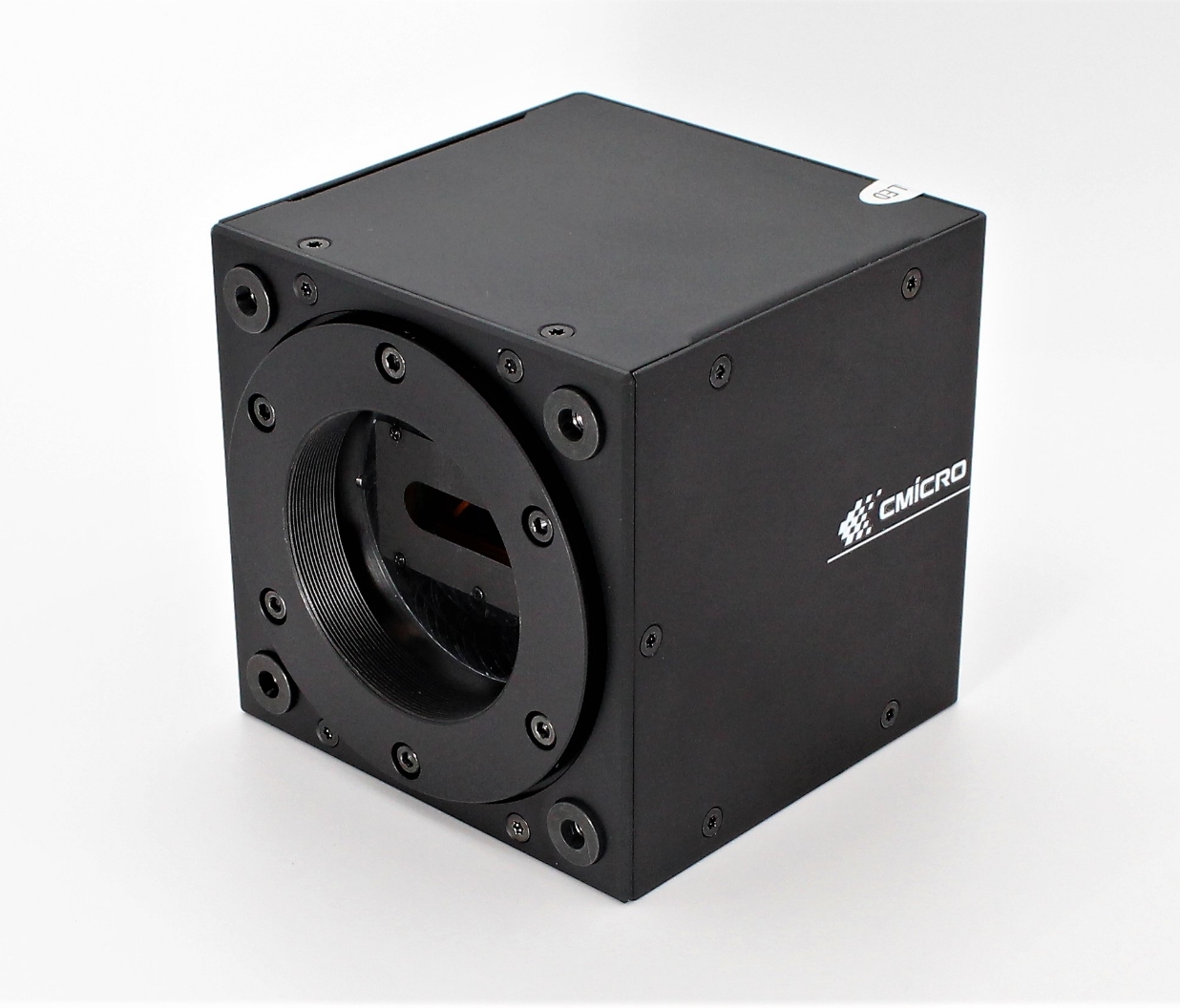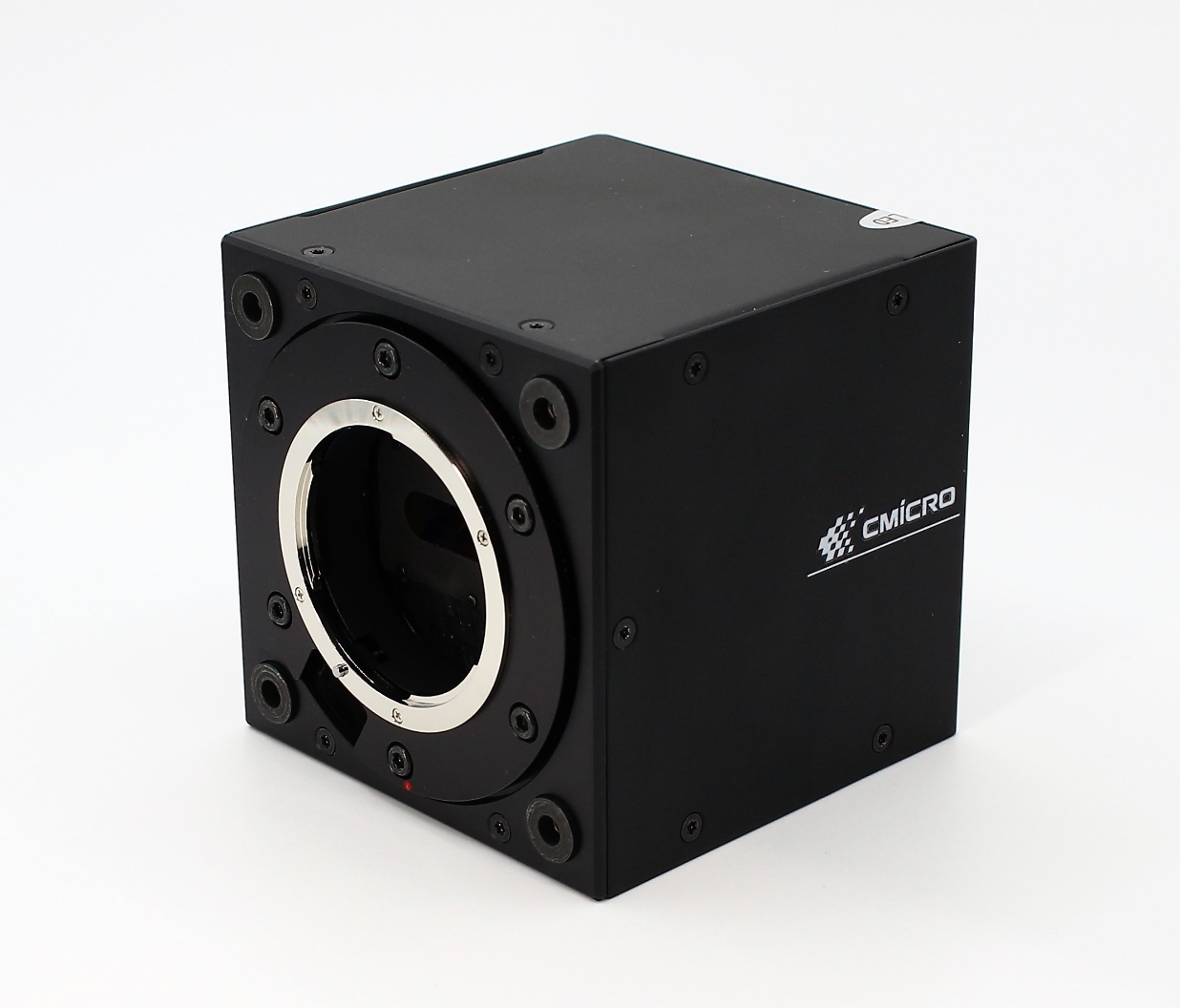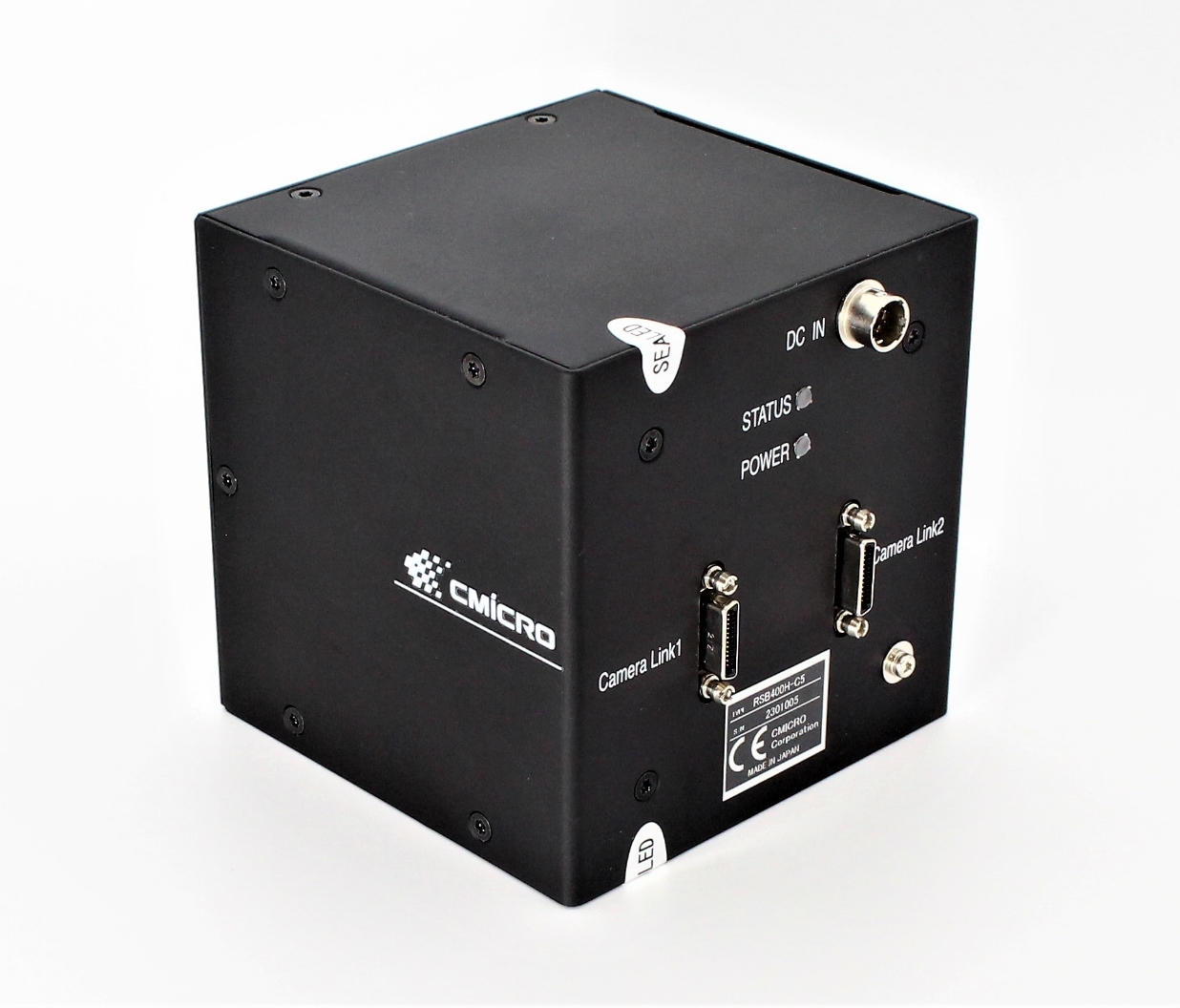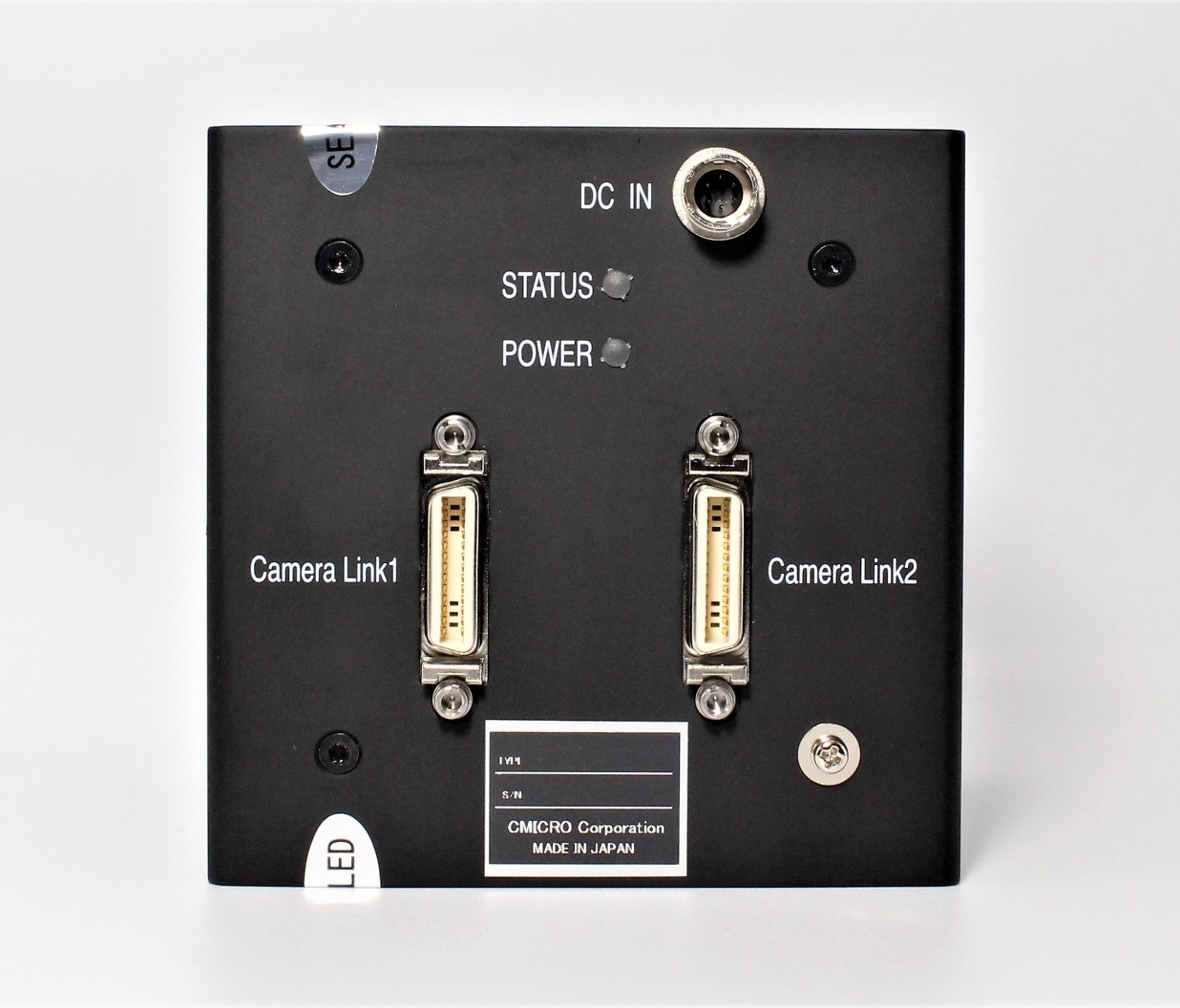RS Series RSB400H/200H
RS Series's Functions & Features
- 4k model: CMOS sensor with pixel size of 7 x 7μm
- 2k model:High-sensitivity CMOS sensor with pixel size of 14x14μm
- Both Camera Link I/F model and CoaxPress(CXP-12)I/F model are supported
- Hight speed model with 160MHz data rate
- Excellent color reproducibility with dichroic prism
- No delay processing is required because RGB data is acquired from the same incident light
- Synchronous mode setting (internal/external)
- Exposure control function
- Horizontal binning function
Performance Specifications
| Physical Specifications | Unit | RSB400HーC5/CF/X5/XF (*4,5) | RSB200HーC5/CF/CF/X5/XF (*4,5) |
|---|---|---|---|
| Resolution | pixel | 4096×3(RGB) | 2048×3(RGB) |
| Pixel size | μm | 7×7 | 14×14 |
| Aperture | mm | 28.67 | |
| Lens Mount | - | M52: -C5/X5 / , Nikon F: -CF/XF | |
| Flange back | mm | 46.5 | |
| Power Input Connector | - | 6Pin:HR10-7R-6P(HIROSE) | |
| Size(W×H×D) | mm | 90×90×88 | |
| Weight(Excluding Lens) | g | 1000 | |
| Data Output Format | - | 160MHz (R,G,B) Camera Link-Medium / CoaXPress(CXP-12) | |
| Data Output Connector | - | [Camera Link] (SDR) 26Pin×2 :HDR-EC26FYTG2 (HONDA TSUSHIN KOGYO) | |
| - | [CoaXPress] MicroBNC, MBNCJ-V-PC(JC Electronics Corporation) | ||
| Operation Range | Unit | RSB400HーC5/CF/X5/XF (*4,5) | RSB200HーC5/CF/X5/XF (*4,5) |
| Exposure Control | - | Yes | |
| Data Rate | MHz | Max : 160 | |
| Line Rate | kHz | Max: 21.4(46.6us) | Max: 62.5(16us) |
| Gain Range | dB | Min: 0 Max: 24 | |
| Data Format | bit | 8/10/12 | |
| Operating Temperature | ℃ | Min: 0 Max: 45 | |
| Power Supply | DC V | Min: 11 Max: 25 (Typ.12~24V) | |
(*1) This information is subject to change without notice.
(*2) Measuring environment of vibration test 【Excitation acceleration : 9.8m/s2, Excitation frequency : 5Hz - 200Hz, Test time : 120 min. each in X, Y, Z direction】
(*3) Please contact CMICRO customer support if you need a line rate of more than 21.4kHz.
(*4) For Camera link, "-C" follow the model number. Ex:RSB400H-C.
(*5) For CoaXPress, "-X" follow the model number. Ex:RSB200H-X
Dimensions
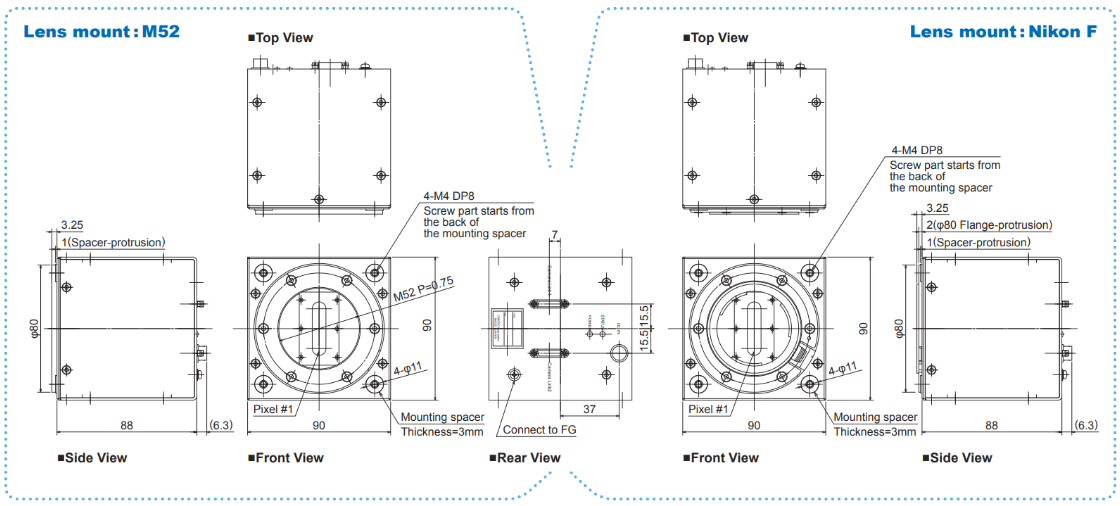
CoaxPress Interface
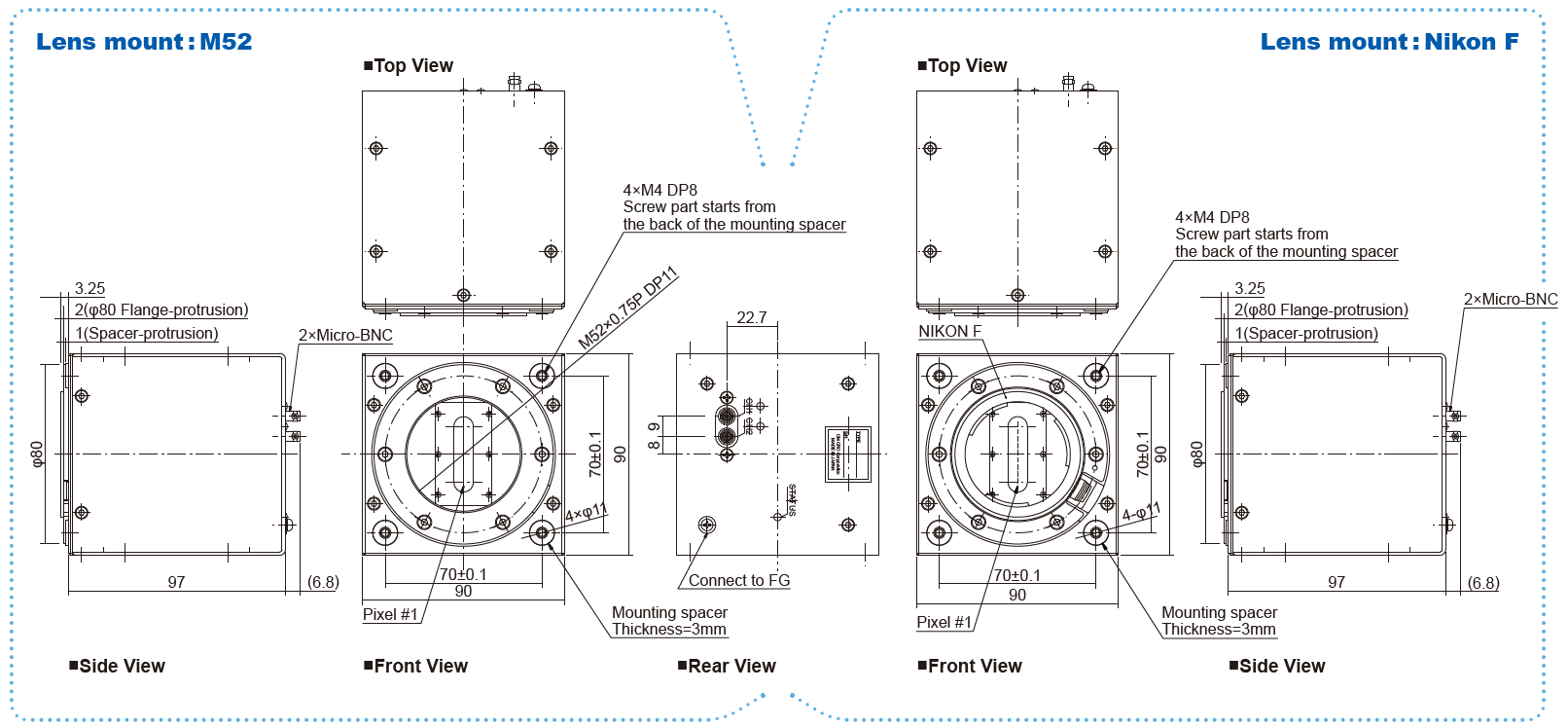

CoaXPress Interface

Product Comparison
| RSB400H | RSB200H | TFB200H | |
|---|---|---|---|
| Sensor | CMOS | CMOS | CMOS |
| Resolution | 4096 | 2048 | 2048 |
| Pixel Size | 7×7μm | 14×14μm | 14×14μm |
| Line Rate | 21.4kHz | 62.5kHz | 19kHz |
| Interface | Camera Link-M/B CoaXpress(CXP-12) |
Camera Link-M/B CoaXpress(CXP-12) |
Camera Link-B/M CoaXpress(CXP-12) |
| Lends Mount | M52/Nikon F | M52/Nikon F | M52/Nikon F |
FAQ
What are the advantages of a prism-based RGB color line cameras?
It is especially useful for taking images on curved surfaces and three-dimensional objects. It is extremely practical when taking images of two workpieces at different speeds within the field of view.
Is delay control necessary for a prism camera such as 3-line camera?
No. Since RGB is spectrally split from a single input optical axis, there is no color drift in the direction of flow.
Is it possible to attach a C-Mount lens because we only use the center of 7µm/4K resolutions?
No it is not possible. the optical path length becomes longer because the light is splitted through a prism. We adopt 46.5mm flange back.
Is it possible to lower the data rate?
Yes, 20/25/40/80MHz transmission rate can be used by changing the command settings.
